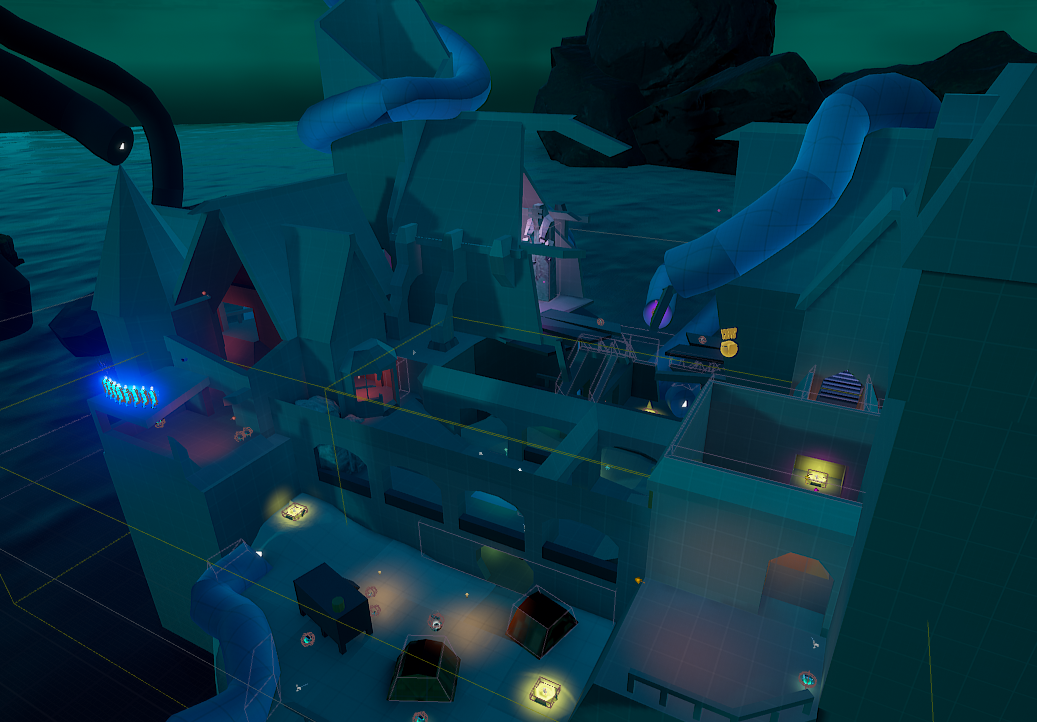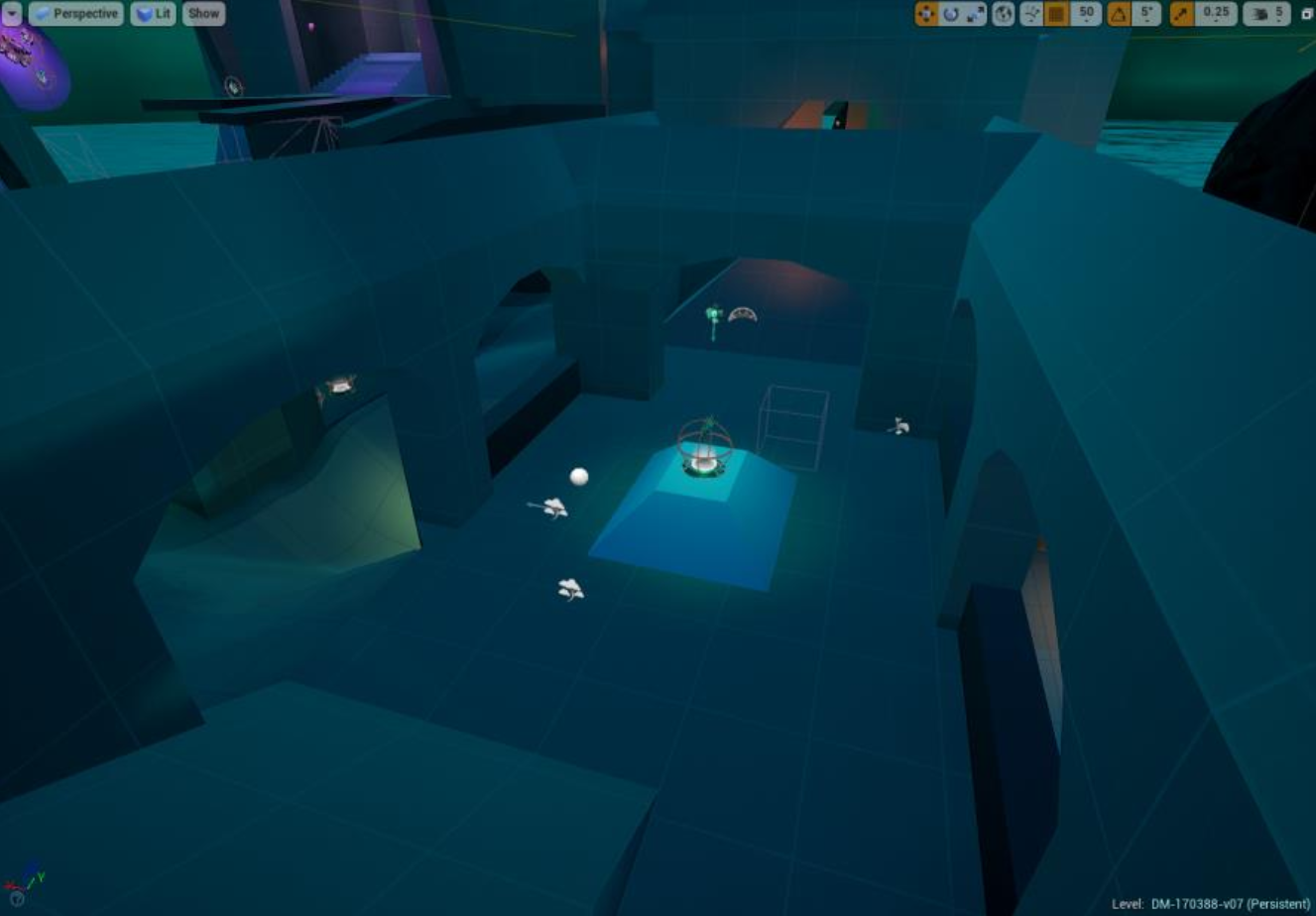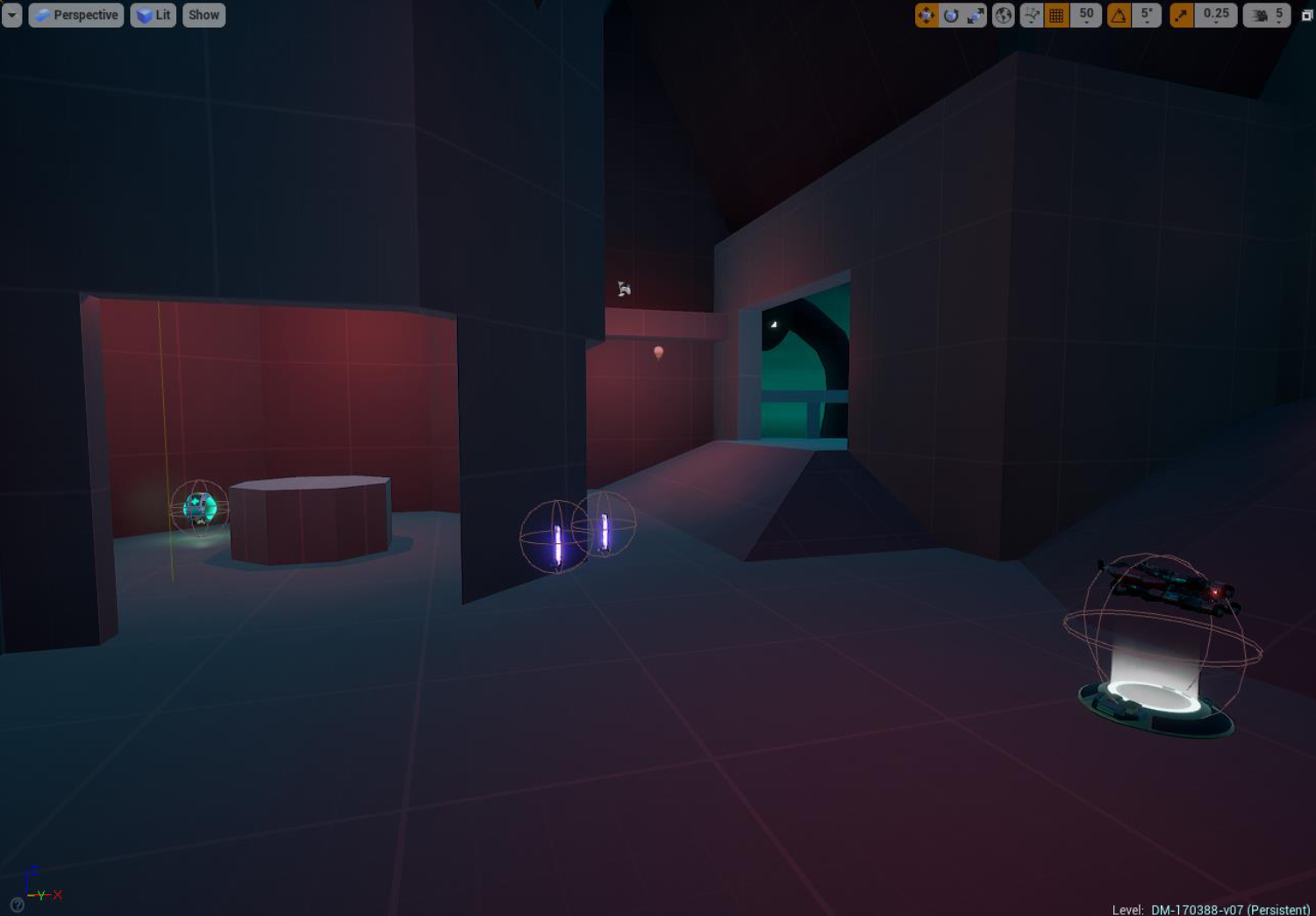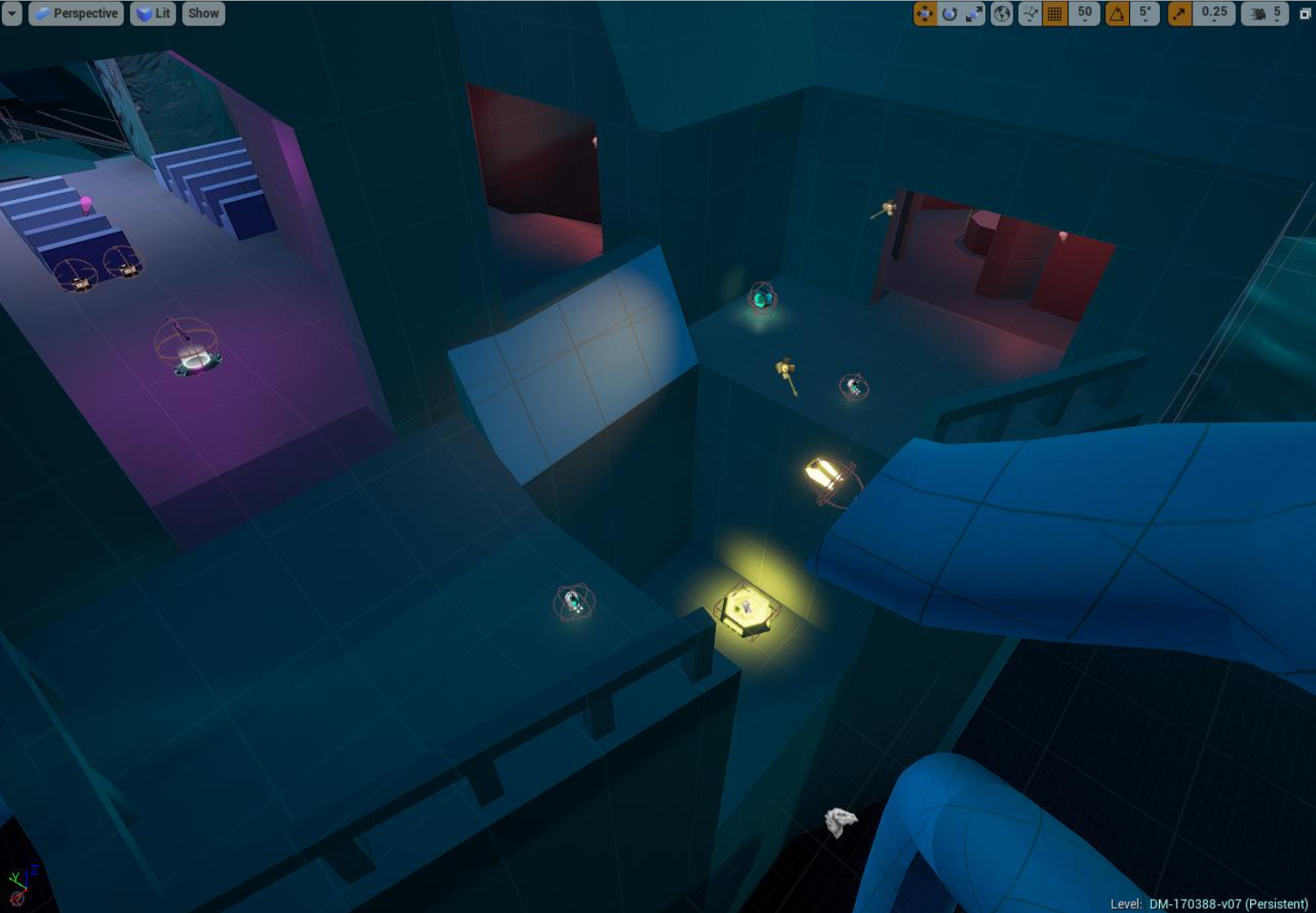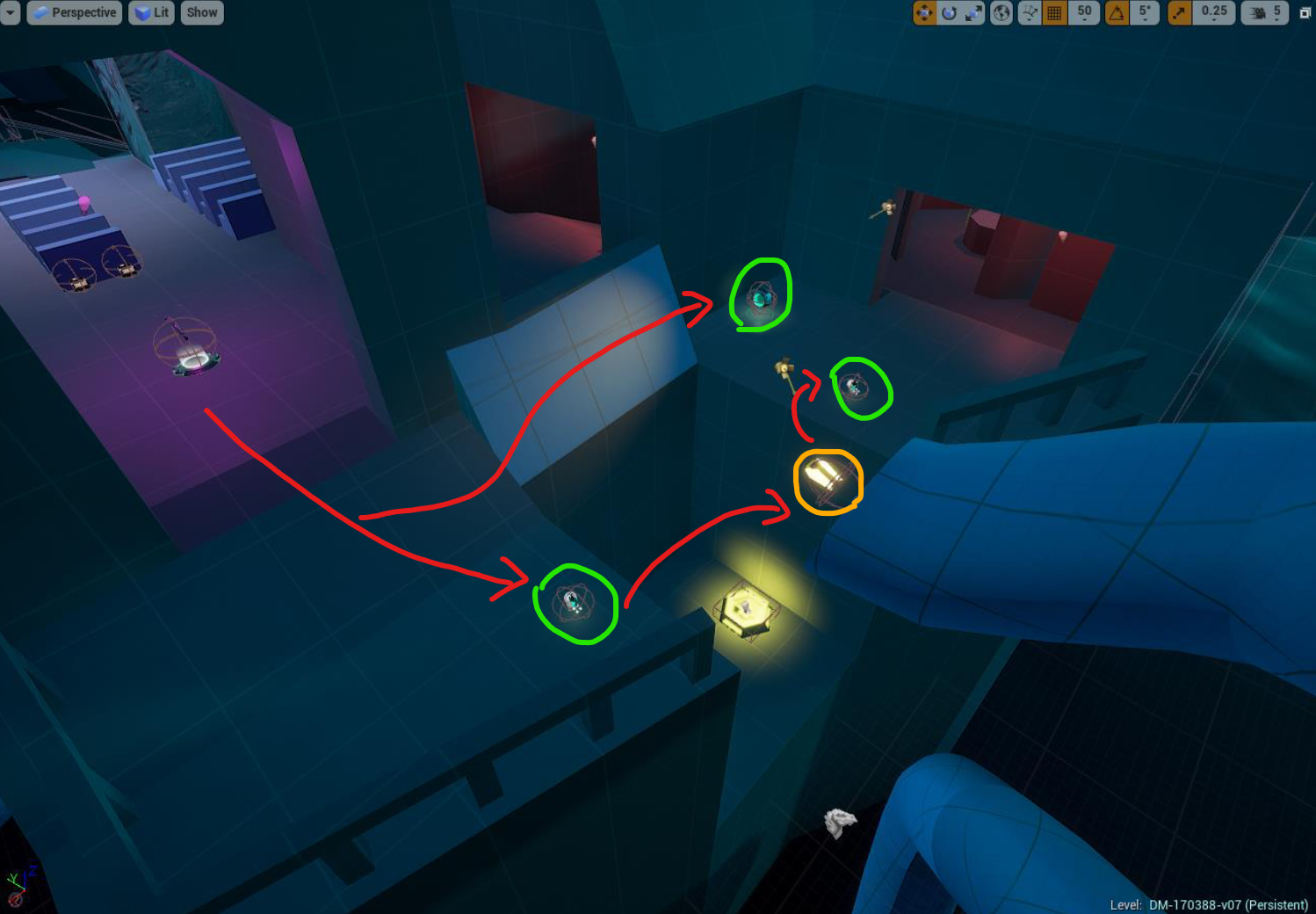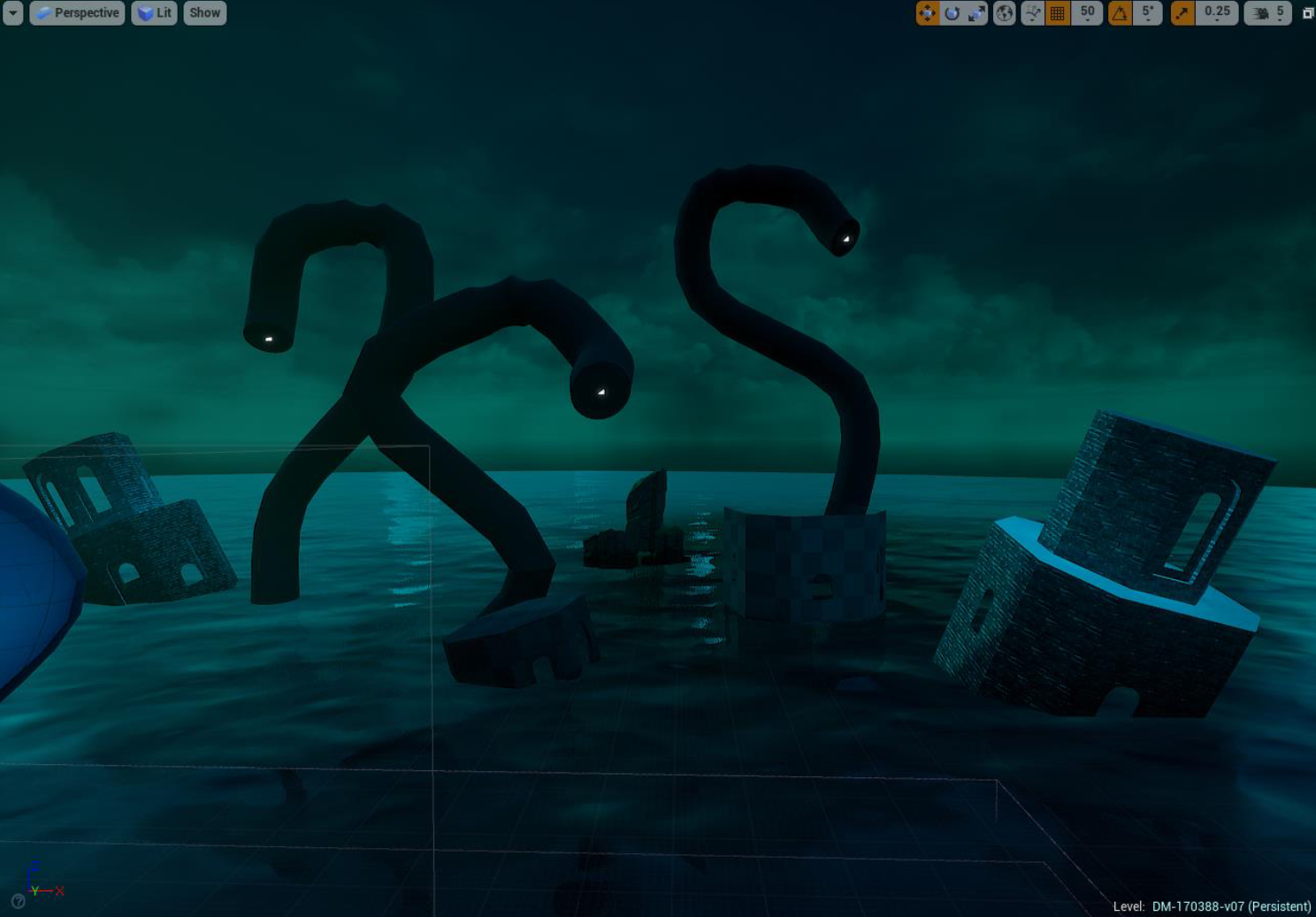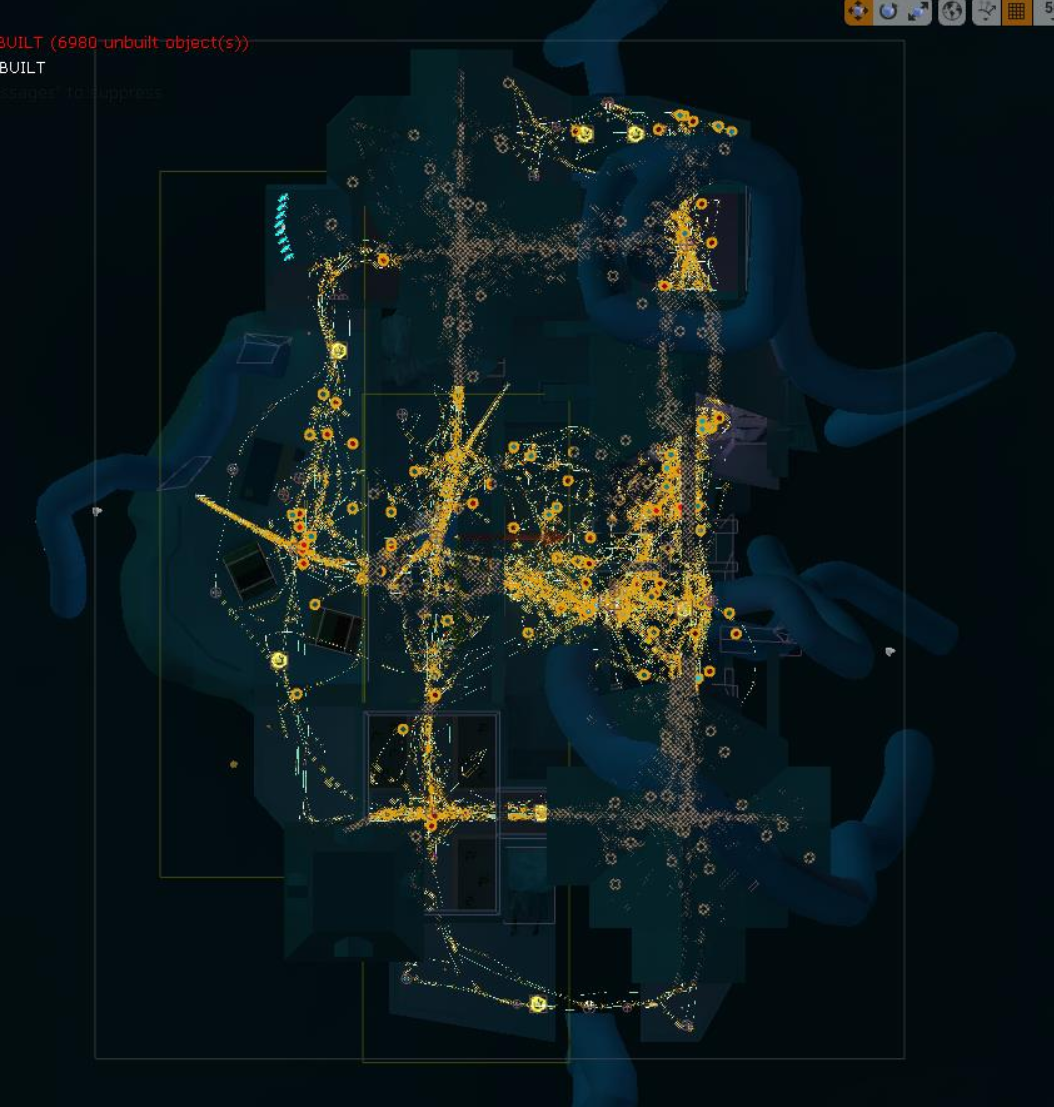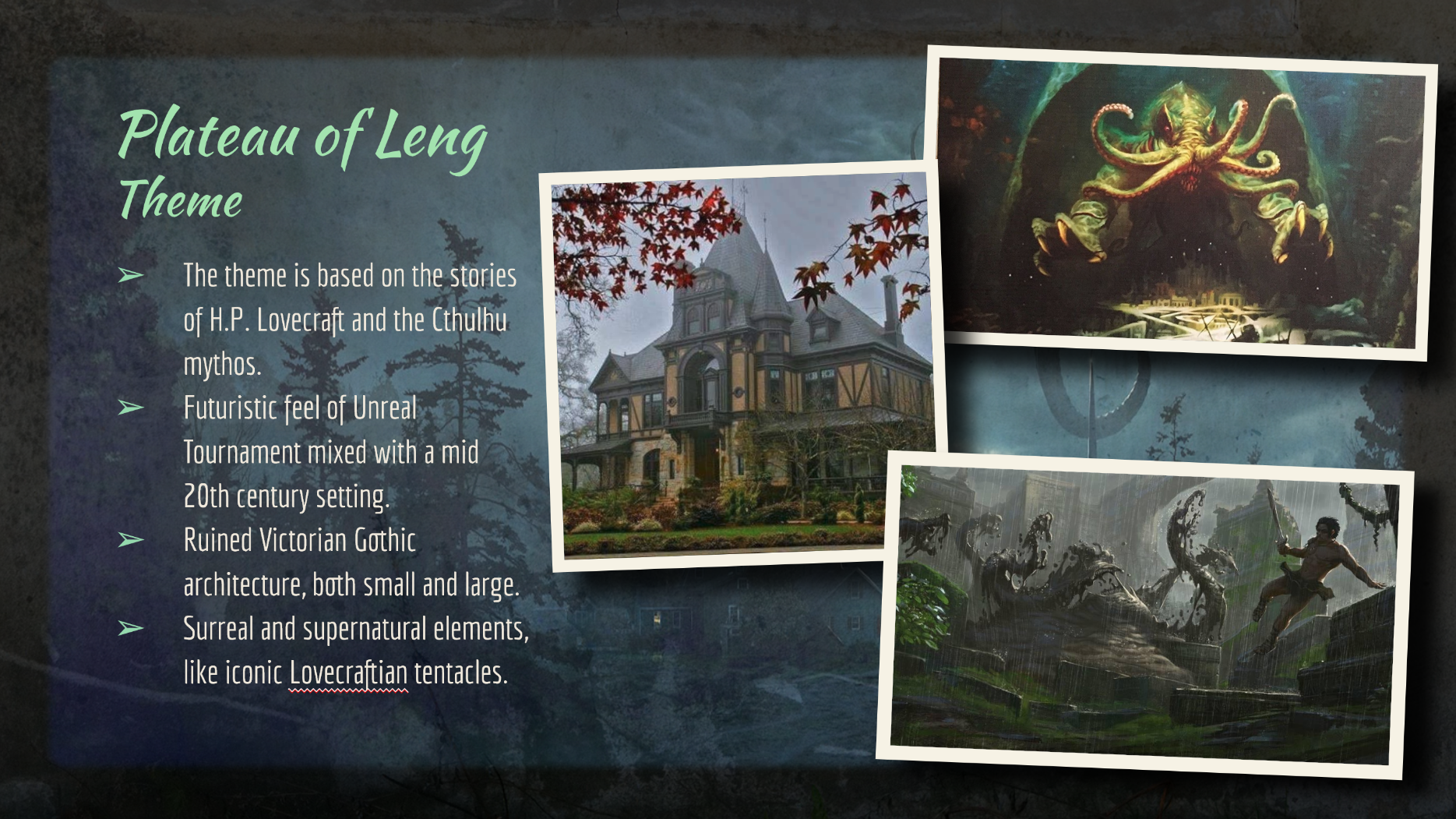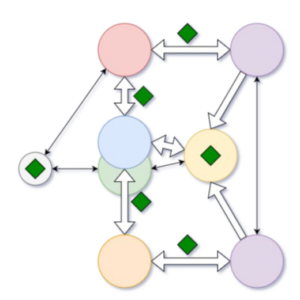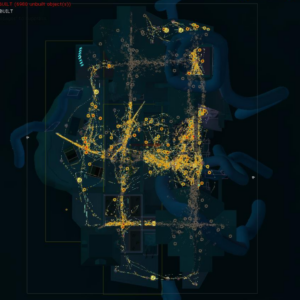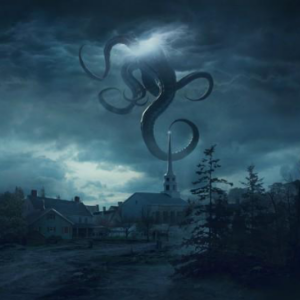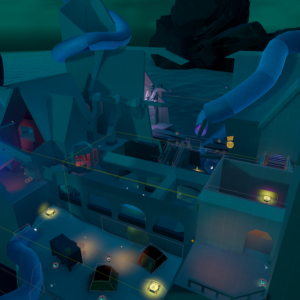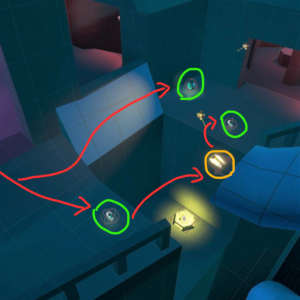Providing deeper insight into the process of iteration, complete with screenshots of older versions and explanation of different changes.
Read More
About
Brief: In 8 weeks, design and build a level for Unreal Tournament (2014) suitable for 6 player free-for-all deathmatch.
Finished: November 2, 2018
Role: Level Designer
Game: Unreal Tournament (2014)
Game Mode: FFA DeathMatch
Editor: Unreal Tournament Editor
Duration: 8 Weeks
PLATEAU OF LENG is a Free-For-All DeathMatch level made for Unreal Tournament. Inspired by the cosmic horror stories of H.P. Lovecraft, this level features a small piece of land ripped from our world and placed in another, with the centerpiece being a church torn apart by tentacles from the sea.
Developed over the course of 8 weeks, this DeathMatch stage ticks all the boxes of an Unreal Tournament map: a smooth, consistent, dynamic flow through all the distinct areas, rooms designed to match the weapon found inside, and enough secondary paths and “ninja paths” to make navigation intuitive and easy.
The level was chosen out of approximately 40 other levels as one of the nine best levels of the year and became an option for the Visual Arts’ course of art passing levels (which sadly didn’t happen due to scope issues). It was chosen due to its strong application of theme and balanced, well-flowing gameplay.
Gameplay Video
Iteration Comparison
My Contributions
Designing and building the map.
Because this was a solo project (except for the researching phase), I was able to design and create the level that I wanted to make with nearly complete creative freedom.
I decided to go for a focus on close-quarters, fast paced fights with multiple layers of verticality. The level was built fully with BSP geometry.
Playtesting and iterating.
To ensure the level reached the intended gameplay goals, met the conditions of satisfaction, and was built according to the design pillars, I conducted playtests on a regular basis to collect feedback.
Playtesting was done by playing the level with 6 players on a server, recording the match with a tool that generated a heatmap, and afterwards asking testers to fill in a survey.
Based on the feedback, I formed conclusions and iteration points, which I then included in the next version of the level.
Researching theme and architecture.
Before we started building a level, each research team had to agree on a theme that all levels in that team would adhere to.
I proposed a theme based on the stories of H.P. Lovecraft, which was chosen because of its clear constraints, recognizable elements, and potential to make every level feel different.
Besides researching the theme, I also put together a few one-pagers on different architecture styles to help with creating recognizable architecture in our level geometry.
Document Archives
Document: Plateau of Leng – Level Design Document
Providing both a detailed and high-level plan for the level, including layout, theme, conditions of satisfaction, and more.
Read MoreDocument: Plateau of Leng – Playtesting Log
Documenting the responses to the surveys sent out after every playtest of each iteration, featuring both raw data and interpretations/reflections.
Read MoreDocument: Plateau of Leng – Theme Moodboards
Two different moodboards proposing different themes for the Unreal Tournament 4 levels, covering setting, geometry, lighting, etc.
Read MoreResearch: 19th Century Architecture Studies
Exploring 19th century architecture styles Italiante, Gothic Revival, and Queen Anne, compiled in stylized one-pagers.
Read MoreResearch: Unreal Tournament – Level Sizes
What is the average size of an Unreal Tournament level,and how long does it take onaverage to traverse one?
Read MoreResearch: Unreal Tournament – Movement Signifiers
What are the signifiers in a level for using certain special movement features (wallriding, elevators, sliding, dodging, wall jumping)?
Read MoreResearch: Unreal Tournament – Roads & Pathways
How does the way different roads and pathways connect to each other influence how the player moves around the level?
Read More